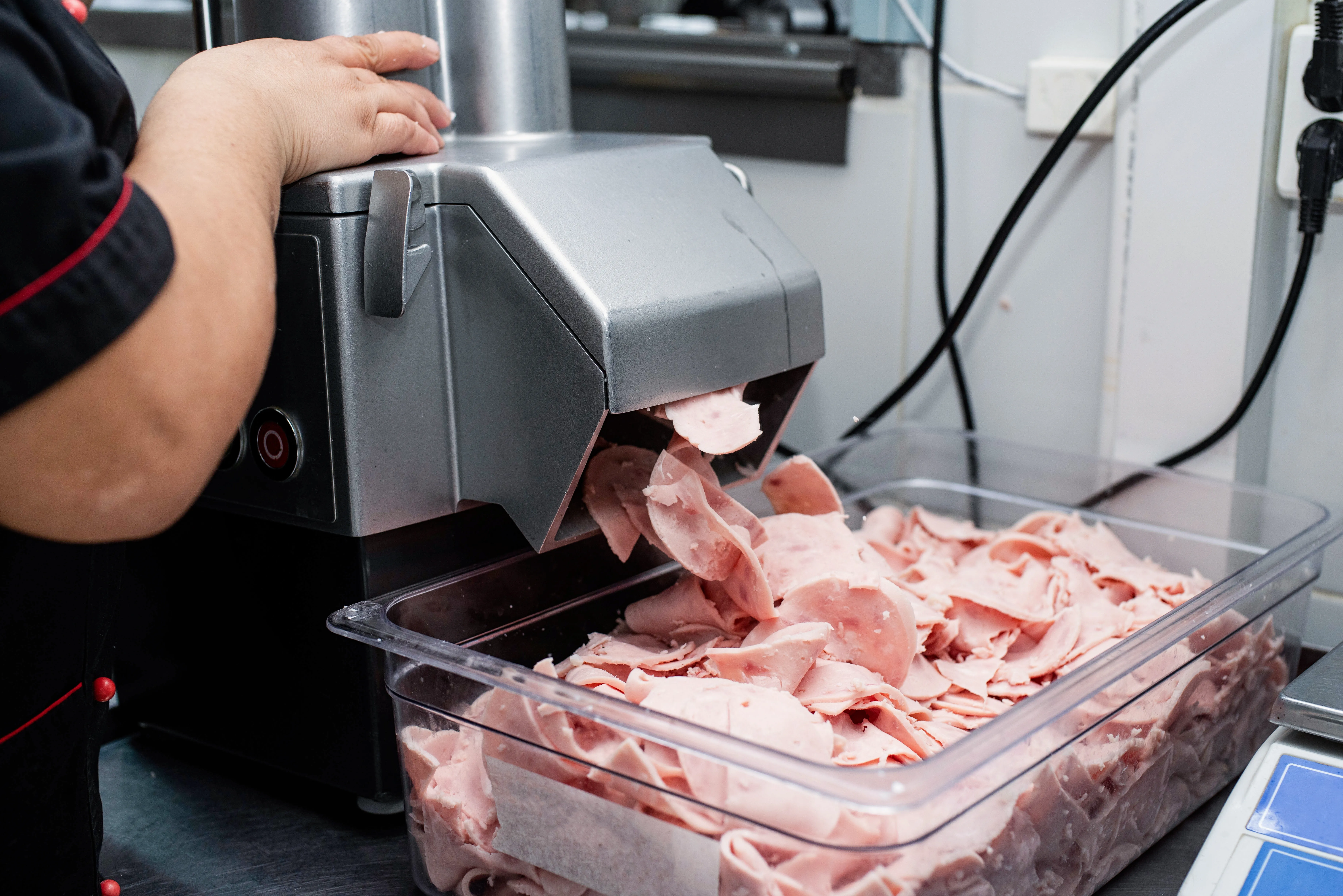Meat slicers are vital kitchen appliances used in various food service environments, including delis, restaurants, and home kitchens. These tools significantly enhance the efficiency of food preparation, enabling chefs and home cooks to serve delicacies such as deli-style meats and charcuterie boards with precision and speed. This guide delves into the functionalities, components, and top manufacturers of meat slicers, providing insights for both seasoned and aspiring food industry consultants.
Understanding Meat Slicers
Meat slicers are equipped with a rotating blade designed to create thin, uniform slices of meat. Typically, these slicers come with a sliding carriage that holds the meat and moves back and forth across the blade. The thickness of the slices can be adjusted to suit specific requirements, a feature controlled by a knob or lever. Some models also offer additional functionalities like serrated blades for bread slicing and motorized carriages for increased efficiency.
Key Components of a Meat Slicer
- Blade: Made of stainless steel, the blade rotates to slice through various foods.
- Motor: Positioned at the slicer's base, it powers the blade for seamless slicing.
- Carriage: This component holds and guides the food across the blade.
- Thickness Control: A knob or lever enables users to adjust slice thickness.
- Food Holder or Clamp: Secures food in place during operation.
- Blade Guard: Provides safety by covering the sharp blade.
- On/Off Switch: Controls the slicer's power.
- Non-Slip Feet: Ensures the slicer remains steady during use.
- Food Tray: Collects sliced food for easy handling.
The Working Principle of Meat Slicers
The core working principle of meat slicers involves cutting meat (and occasionally other foods) into thin slices using a rotating blade. The blade, typically constructed of stainless steel, spins rapidly to complete this task. To ensure safe and effective use, meats are safely positioned on a sliding carriage that uniformly passes by the blade. Preserving both efficiency and safety, slicers often include a food holder or clamp to keep items stable during the cutting process.
Reputable Manufacturers in the Industry
For food manufacturing engineers and those consulting in food technology and plant engineering, choosing a respected meat slicer manufacturer is crucial. Leading brands include:
- Hobart
- Berkel
- Bizerba
- Globe Food Equipment
- Anvil America
- Nemco Food Equipment
- Chef's Choice
- Weston Brands
- Waring
- Avantco
Conclusion
In the realm of food manufacturing and processing, meat slicers serve as indispensable tools that considerably enhance productivity and food consistency. Food industry consultants, whether focusing on processing plant design, construction, or technology consulting, recognize the value these appliances add to any kitchen's workflow. Understanding the components and operation of meat slicers can lead to informed decisions in food factory design and engineering, ensuring optimal kitchen operations.
 PMG stands for Projects Management Group. We provide state-of-the-art Engineering Services to build world-class food processing factories.
PMG stands for Projects Management Group. We provide state-of-the-art Engineering Services to build world-class food processing factories.  Engineering is the difference between Chaos and Excellence. If you are going to do it, do it right.
Engineering is the difference between Chaos and Excellence. If you are going to do it, do it right.  Explore the diverse range of Products in the Food Processing Industry.
Explore the diverse range of Products in the Food Processing Industry.  Explore the technologies at the heart of the the Food Processing Industry.
Explore the technologies at the heart of the the Food Processing Industry. 


 Back
Back 



